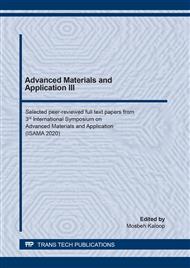p.90
p.99
p.105
p.111
p.118
p.125
p.131
p.137
p.143
A Study of Thermal Conductivity Property of Socks
Abstract:
Socks fabrics seem a minor clothing in apparel categories but are indispensable item for daily activities for users. The function of socks is either for heat insulation of body temperature in cold weather or heat releasing to keep thermal neutral for foot in hot weather. Socks with good quality are conducive to prevent foot disease or smelly odor from foot. The wearing comfort of socks can be affected by the fabric properties of thermal transfer. The present study aims to investigate the relationship between the fabric parameters and thermal conductivity property of knitted socks fabric. The physical test on commercial socks fabric was carried out in standard condition atmosphere. It was found that the thermal conductivity of fabric was positively proportional to yarn count and thickness.
Info:
Periodical:
Pages:
118-124
Citation:
Online since:
August 2020
Keywords:
Price:
Сopyright:
© 2020 Trans Tech Publications Ltd. All Rights Reserved
Share:
Citation:


